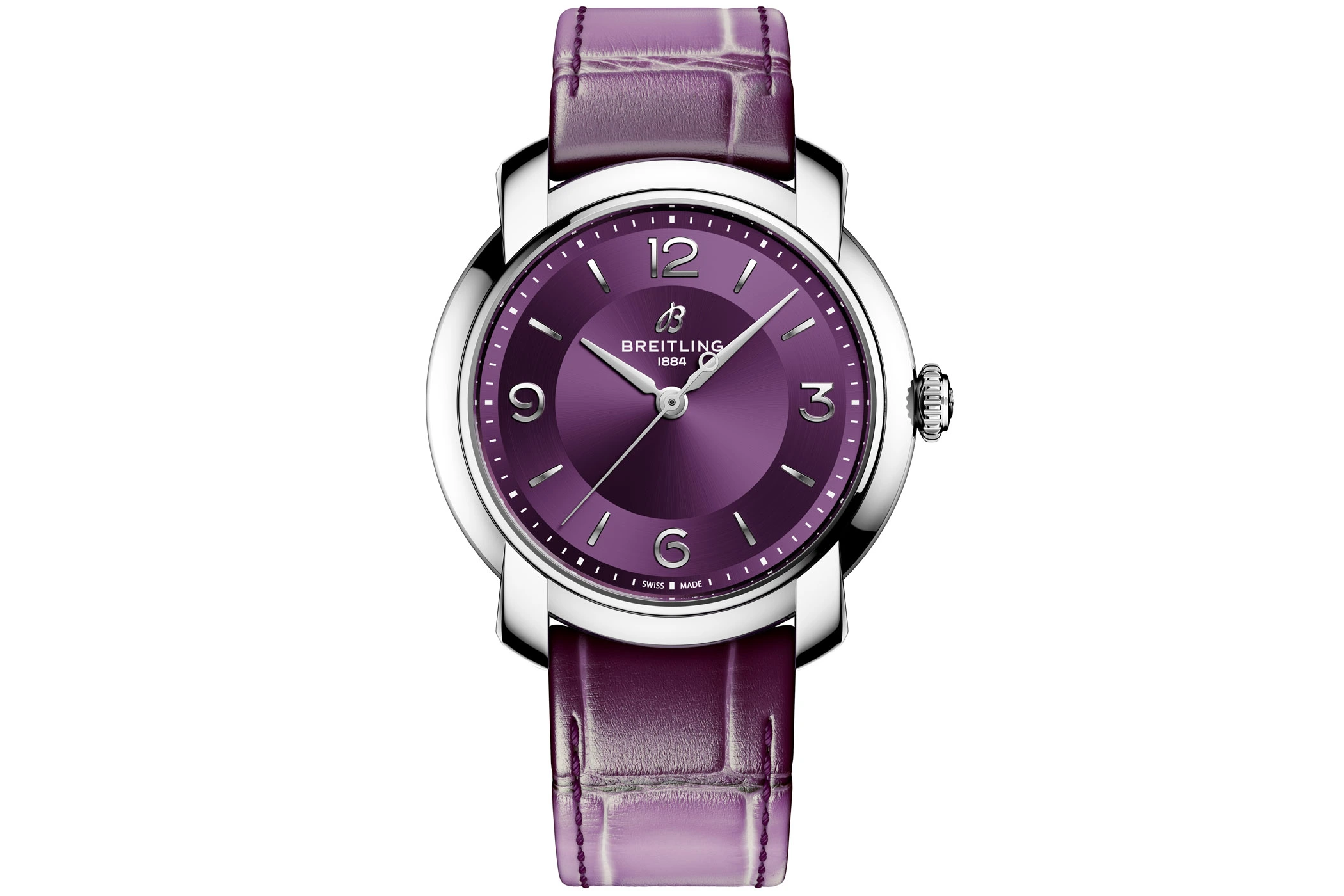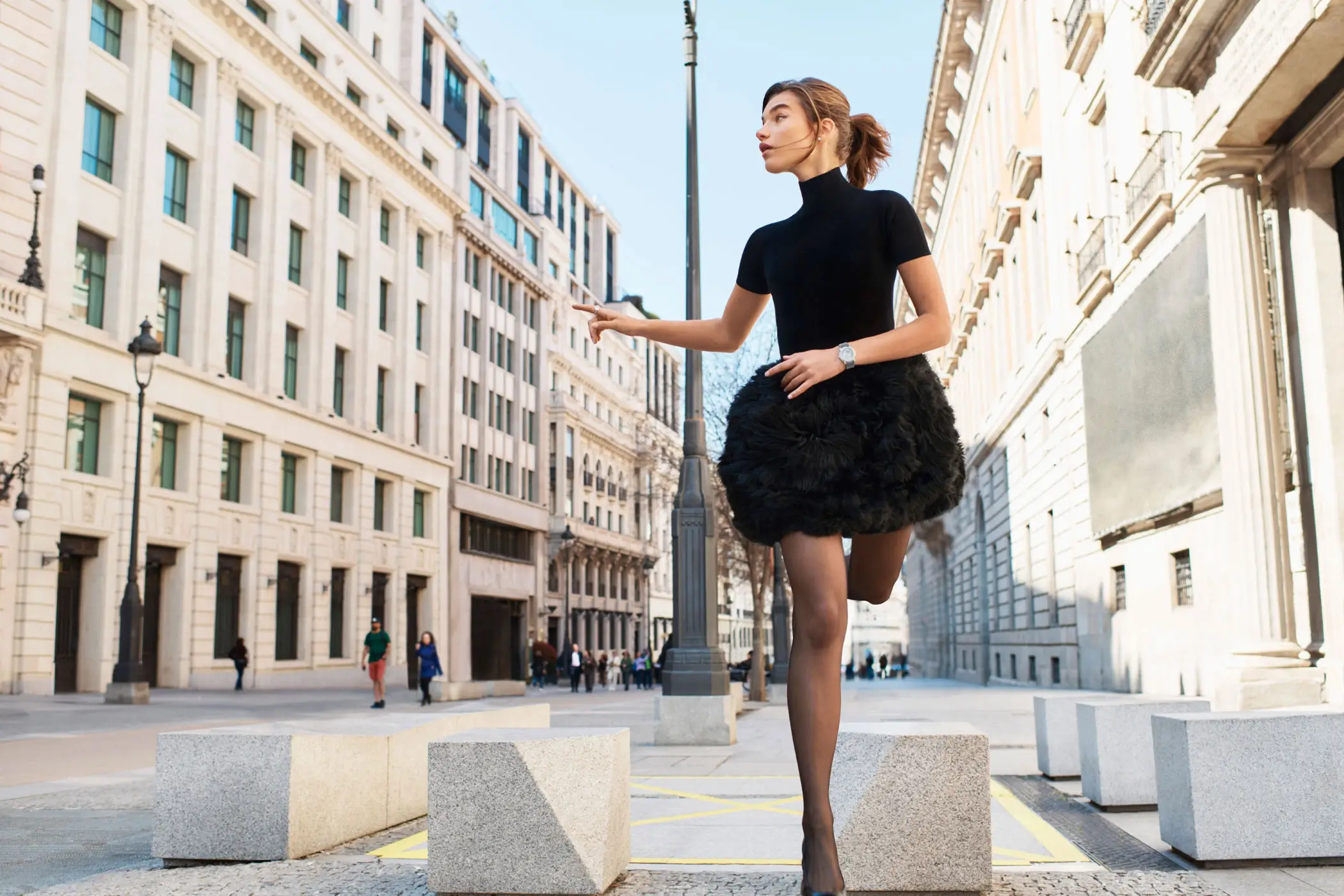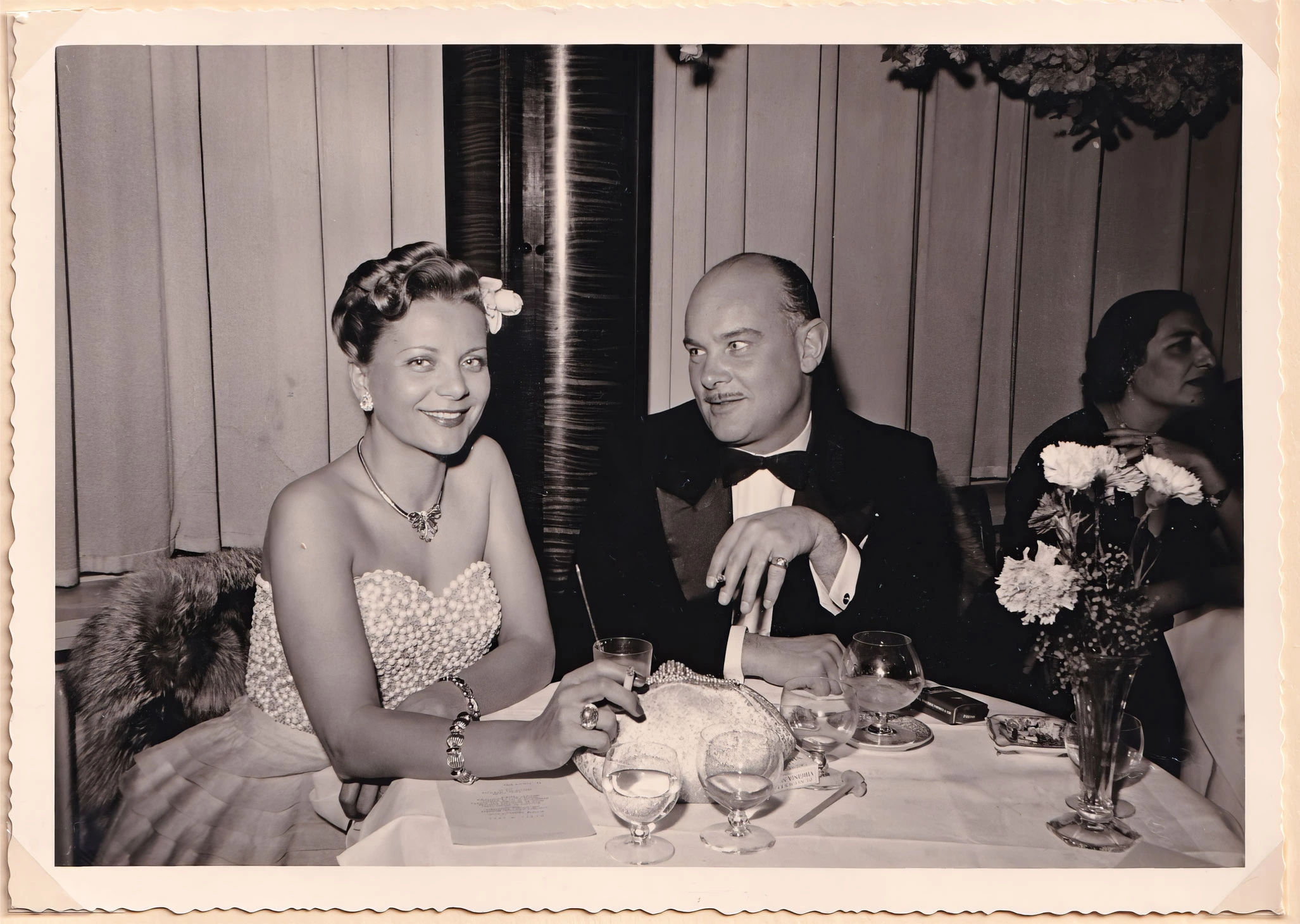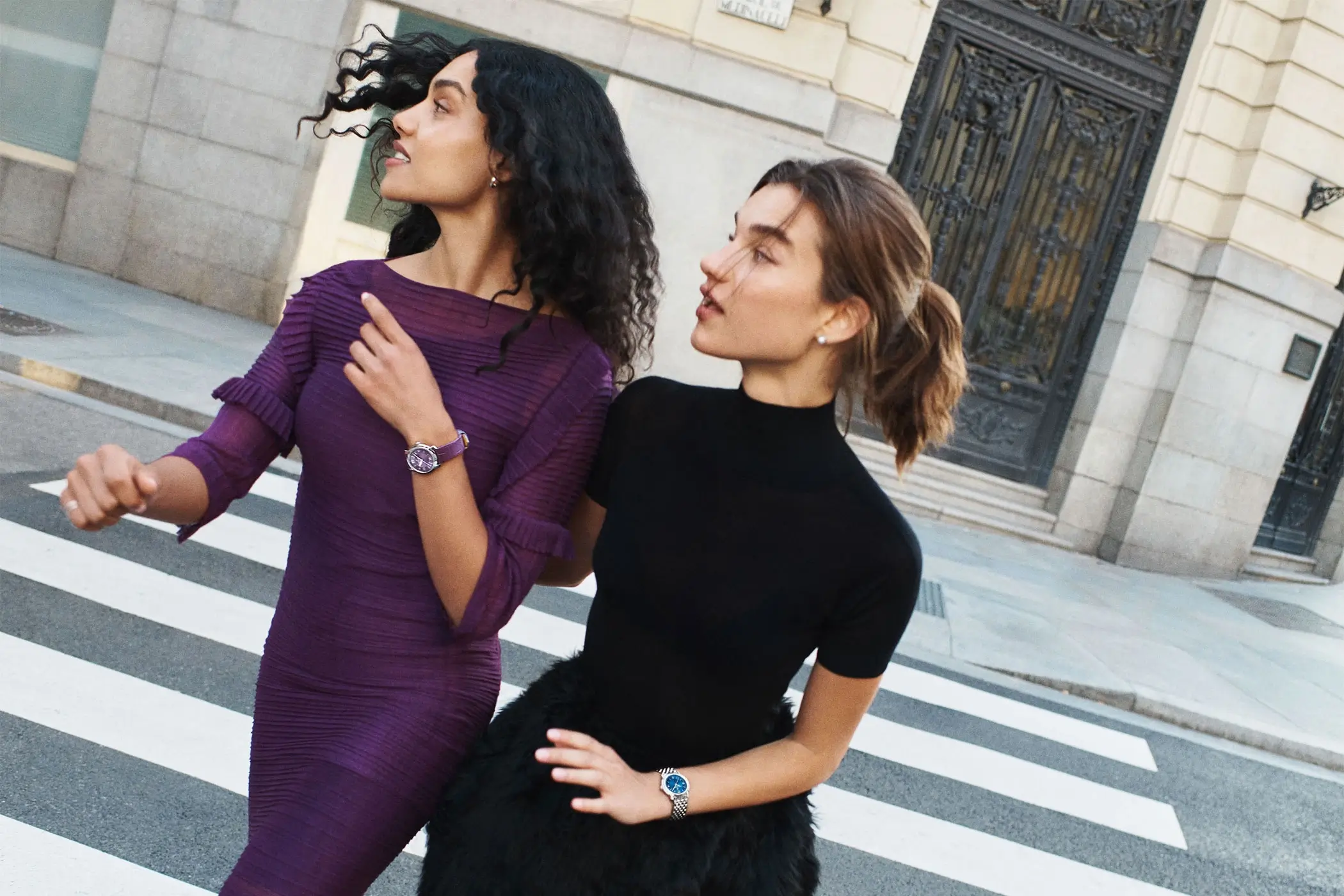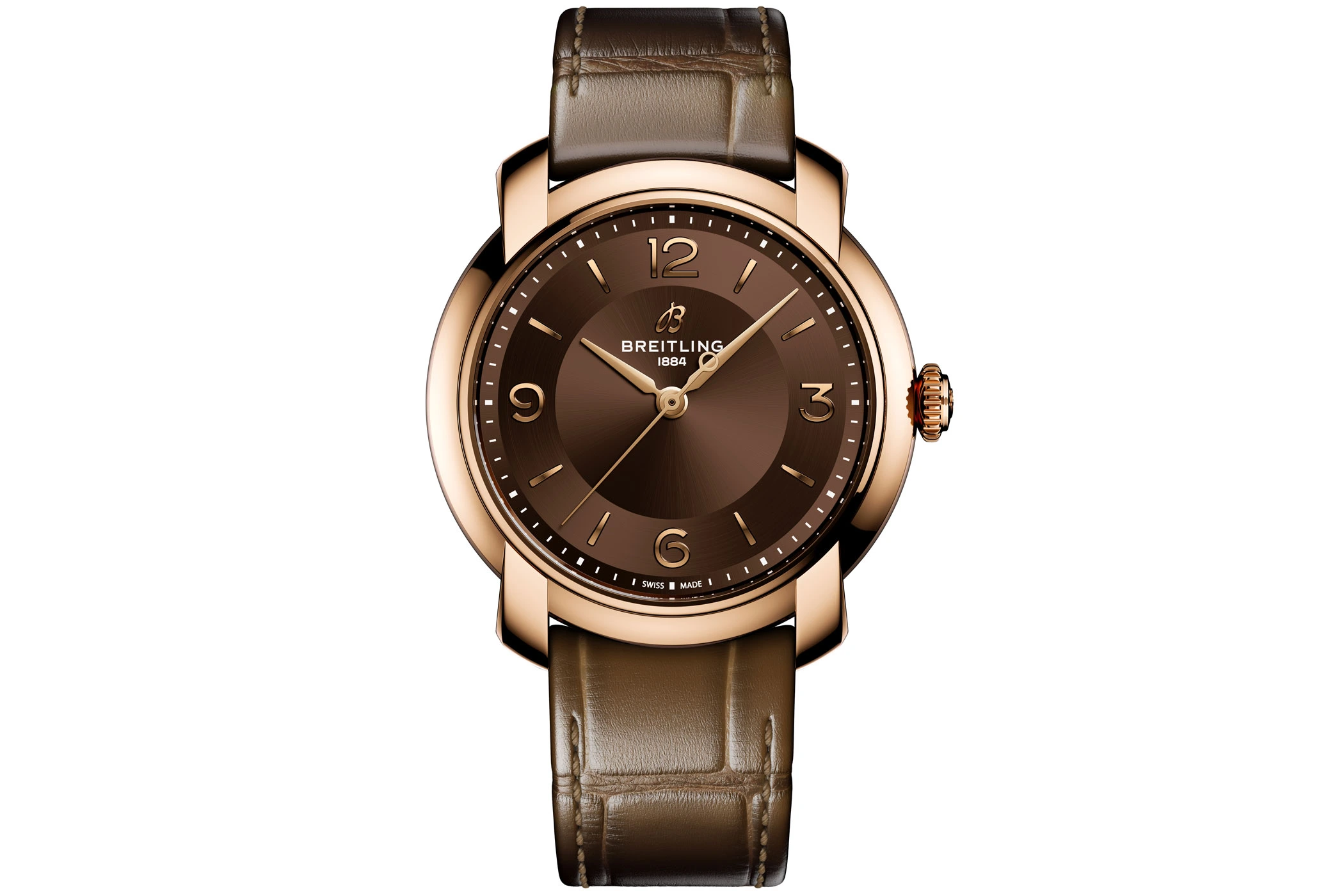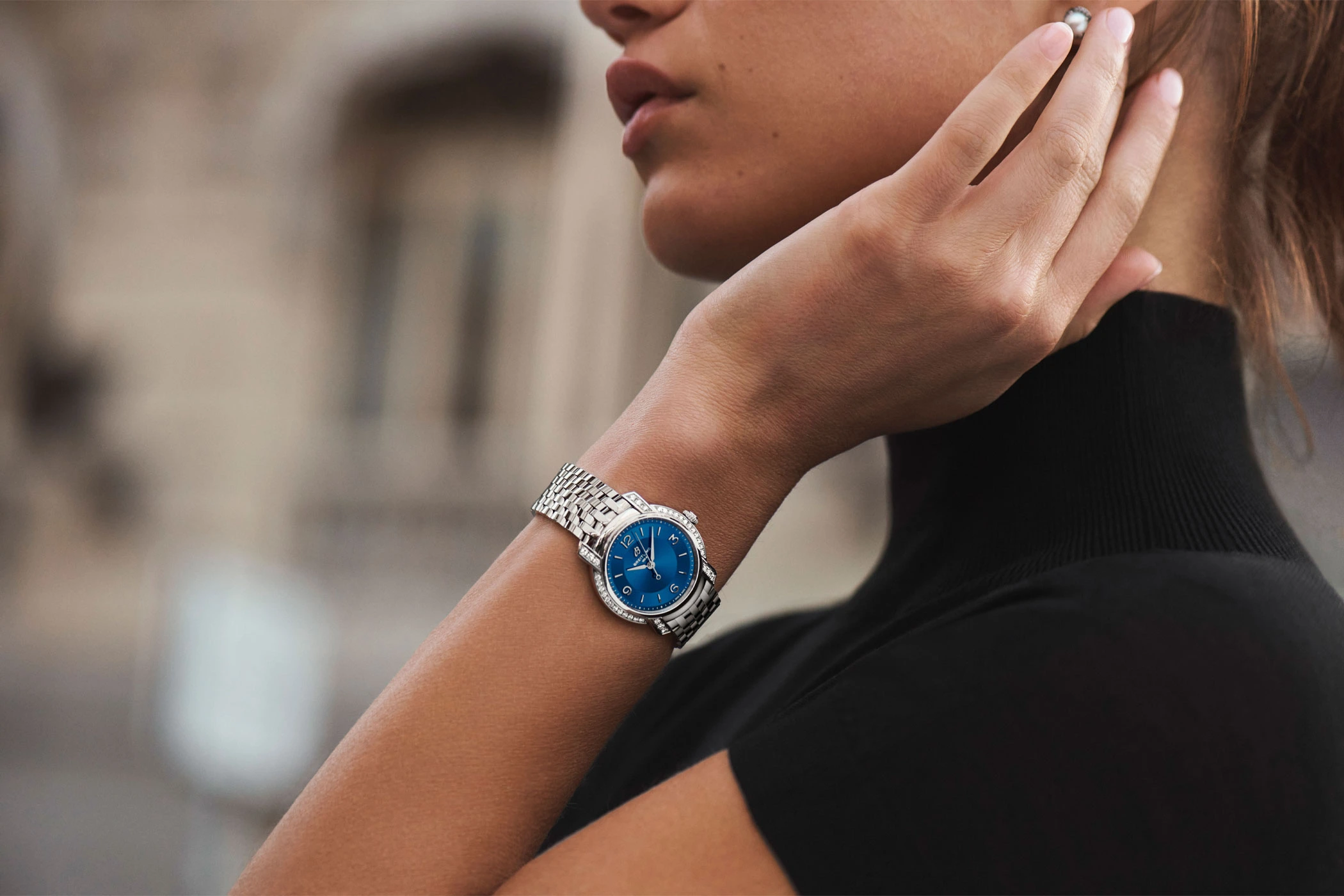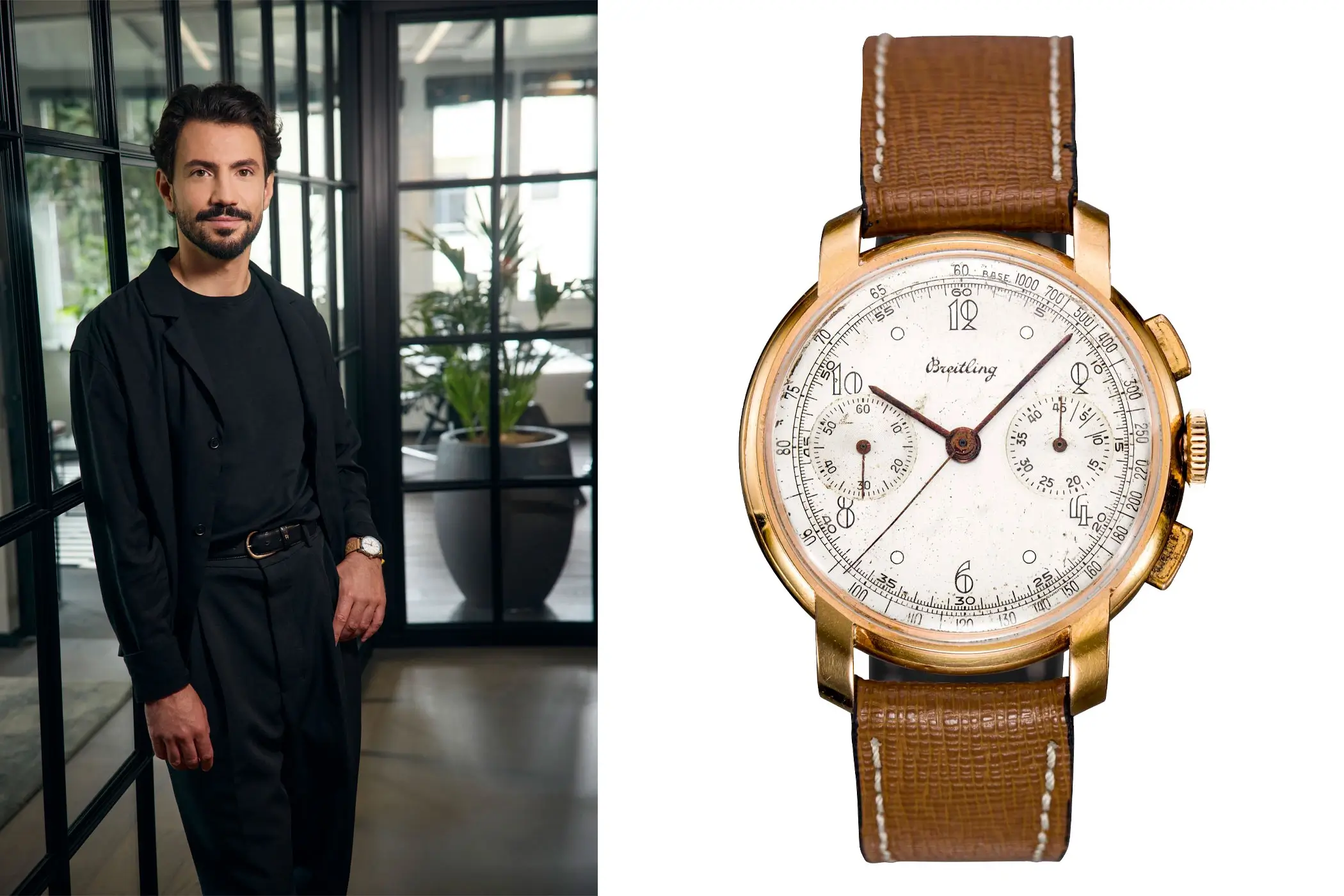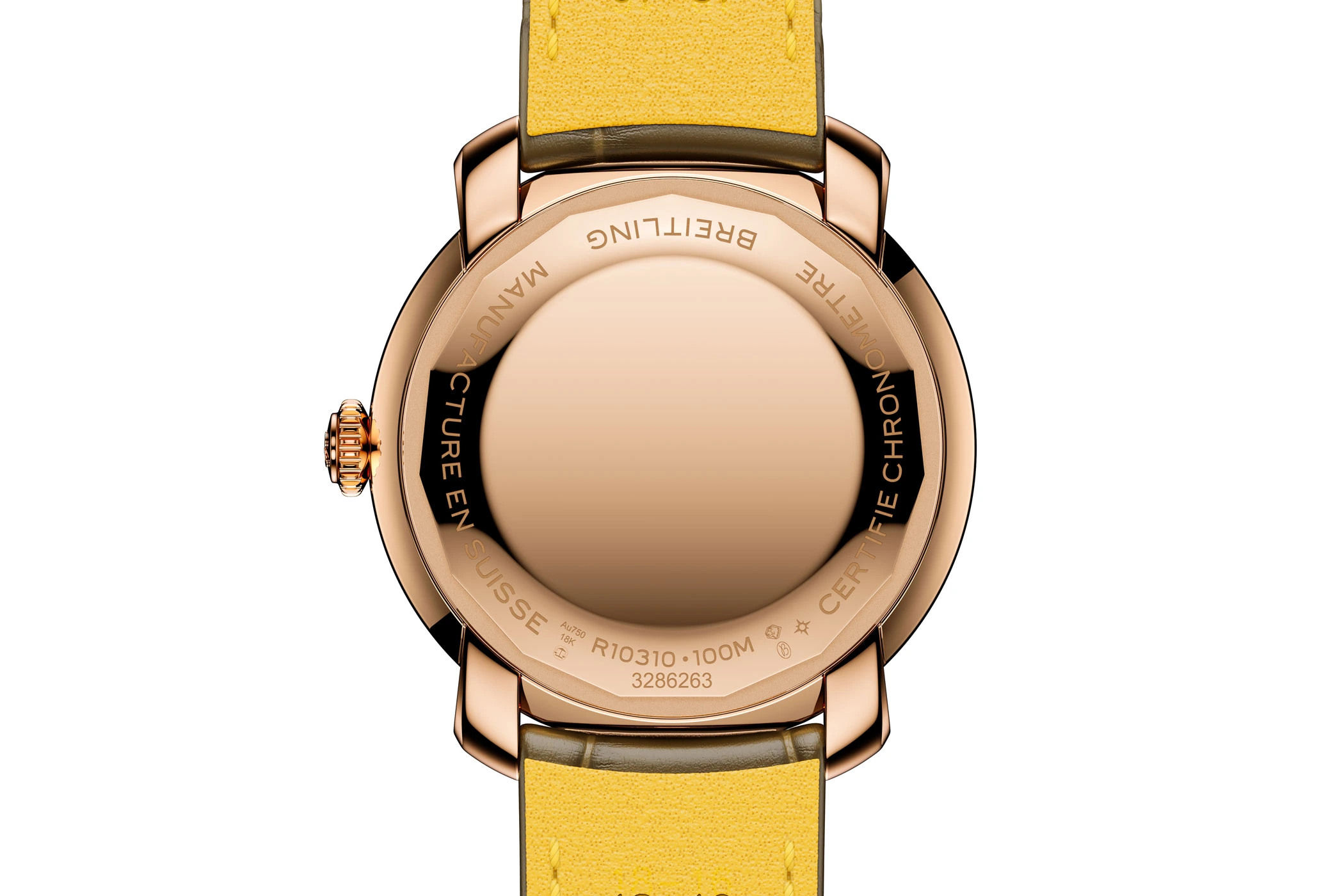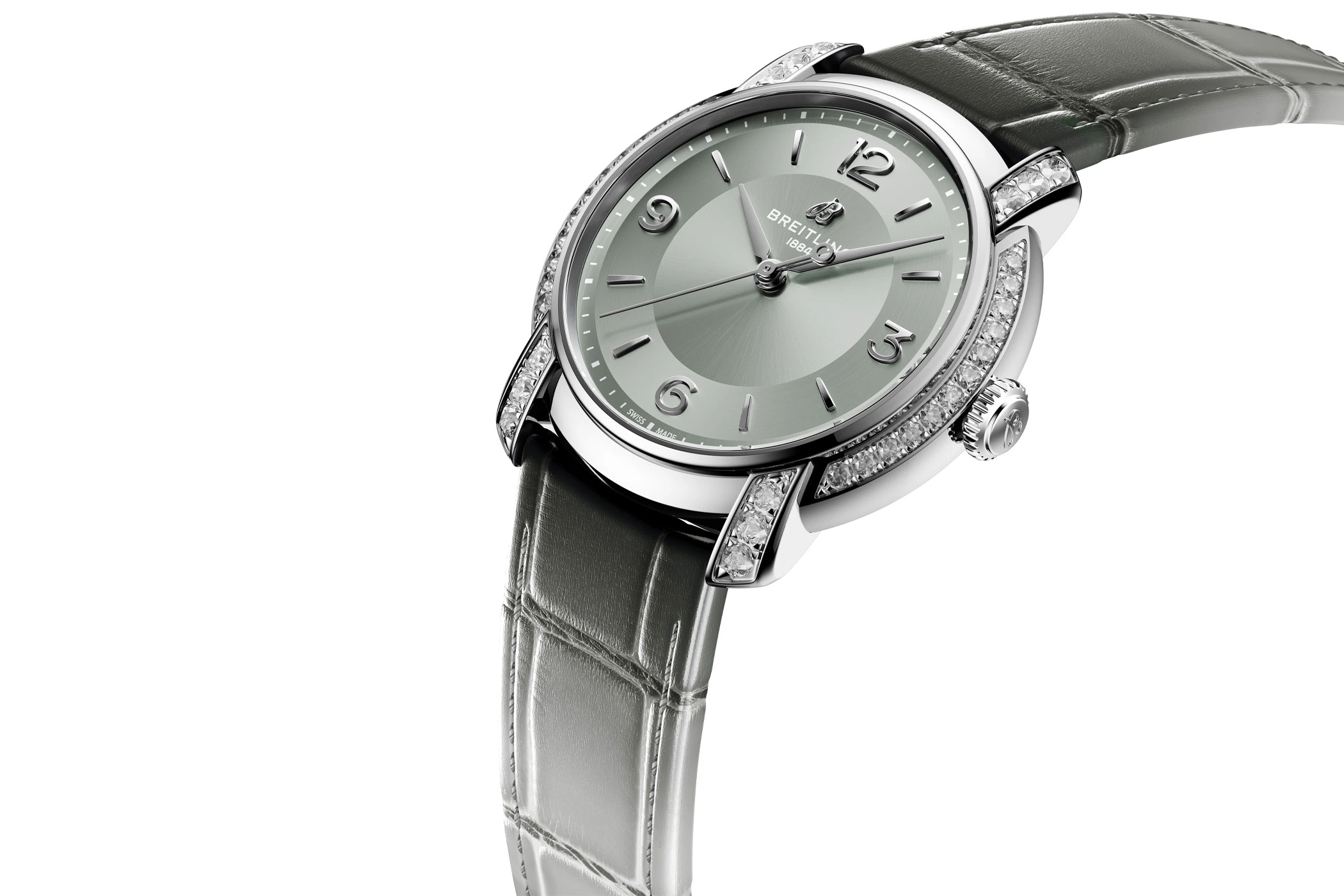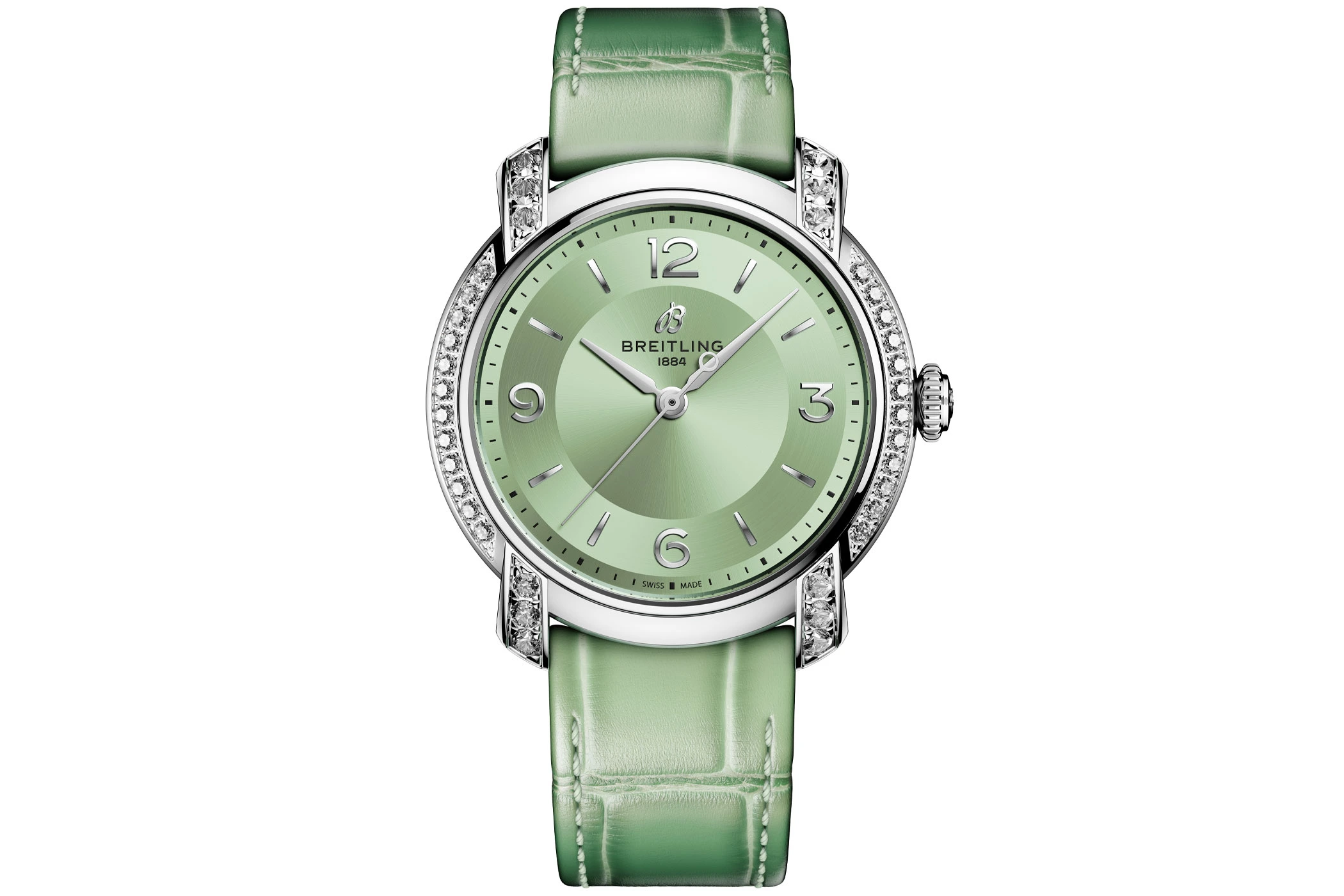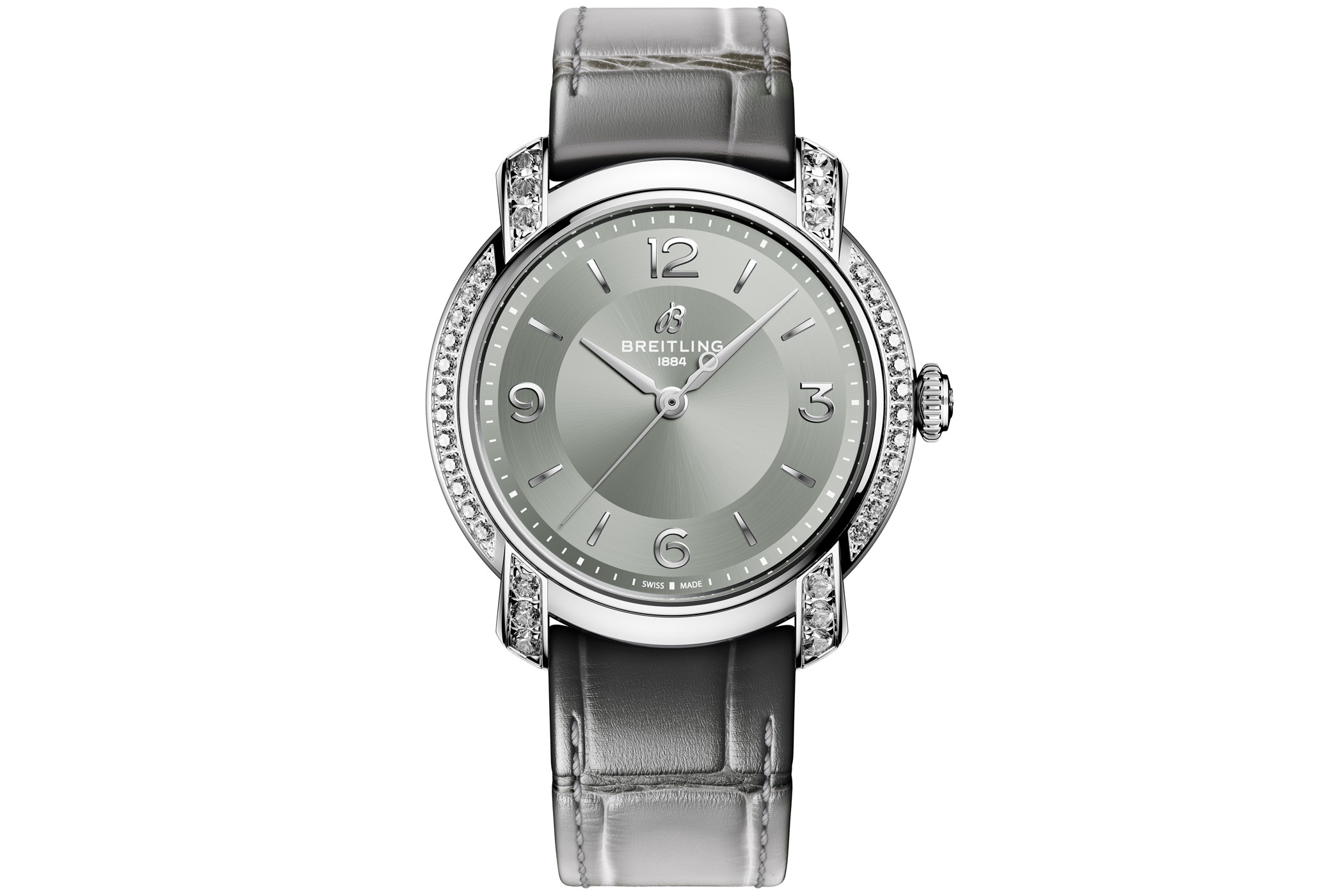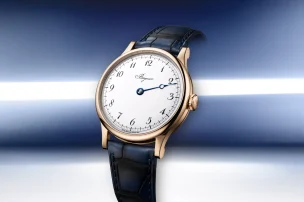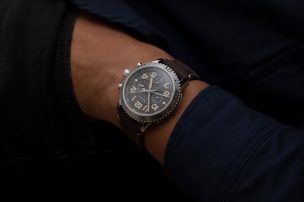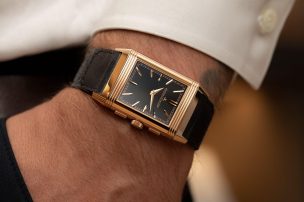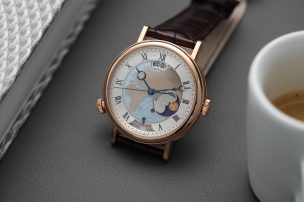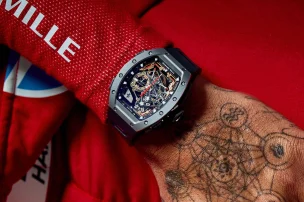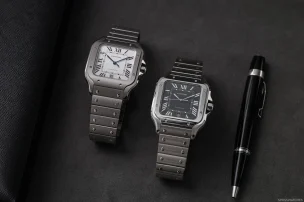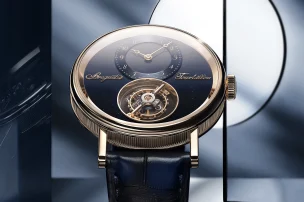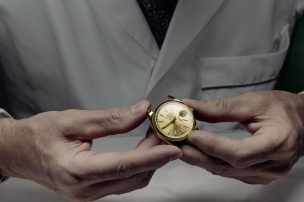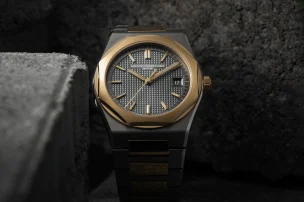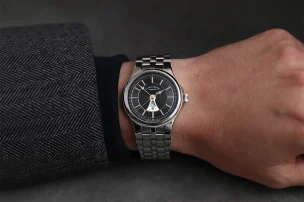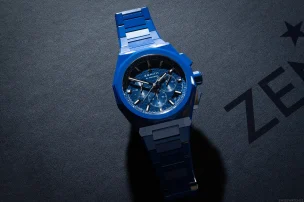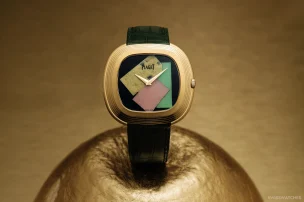

Breitling Lady Premier – Interview With Head of Product Design Pablo Widmer About Breitling’s New Women’s Dresswatch
The world of watches is steeped in history and stories. This also applies to Breitling, whose history began in 1884 with Léon Breitling’s workshop. As Head of Product Design, Pablo Widmer has been continuing to write the brand’s design narrative and that of its watches for around two years. One of the most recent chapters: the Lady Premier.
The seven new ladies’ models from Breitling are part of the Premier collection, which was introduced in the 1940s and, in its early years, primarily featured classically elegant watches designed for men’s wrists.
The role of women at and for Breitling
‘Strongly present, beautifully shaped’ – that’s how Pablo Widmer describes the ideal women’s watch, and therefore also the Lady Premier. ‘A watch should always reveal something about the person who wears it. It’s not about matching current fashion trends,’ is his guiding principle. And so, the Lady Premier, too, has ‘distinct edges and clean lines’ – just like the woman of today.
In doing so, he brings Willy Breitling’s philosophy into the present day, into the world of self-confident, modern women. The grandson of the company’s founder, who shaped the brand from 1932 to 1979, was firmly convinced that ‘when a woman puts on her watch, her whole personality is magically transformed.’
Today, the roles and tasks of women and watches are defined differently. The design now follows the personality of its wearer. And she neither needs nor desires a magical transformation through a watch. Pablo Widmer knows this, and so does Breitling. Clear proof of that can be seen in the brand’s current, strong-minded ambassadors such as actress Charlize Theron, professional surfer Stephanie Gilmore, and Ironman world champion Lucy Charles-Barclay.
However, the very first ambassador of Breitling’s feminine side was Willy Breitling’s wife, Beatrice. She was not only his muse but also a decisive force in shaping the brand’s creative direction. She was the ‘inspiring embodiment of grace and glamour,’ as her son Gregory recalls.
Lady Premier – a new collection with a clear sense of purpose
The new Lady Premier collection, whose name leaves no doubt about its essence, has recently joined the Swiss luxury brand’s range. In fact, enriched might be the more fitting term. Parity does not yet reign – the models classified as men’s watches still vastly outnumber those designed for women in Breitling’s current portfolio. There remains ample creative space for even more femininity.
Ultimately, however, it is up to the buyer – woman or man – to decide from which category they choose. And then, in the blink of an eye, a supposed men’s watch becomes a ladies’ watch – and vice versa.
The Lady Premier collection also includes at least one model that ‘a man really ought to try on,’ as Pablo Widmer puts it. And he should know. Under his creative direction, a total of seven debutantes came to life: four mechanical and three quartz models.
I will set the latter aside for now, but for the sake of completeness, let them be briefly mentioned here: housed in a 32-millimetre stainless-steel case that is water-resistant to ten bar, they are powered by the COSC-certified Breitling Calibre 77 with SuperQuartz technology. Their precision is displayed on dials in blue, black ,or mother-of-pearl. Two versions feature lab-grown diamonds set into the bezel. Prices are 4,800 euros and 7,200 euros respectively.
Lady Premier – the history of a new collection
How does one begin designing a watch? Among other things, this is a question we put to Pablo Widmer. ‘At the start of a design process, a narrative is created that suits the context, in order to define where the journey should go,’ he replied.
This narrative is shaped by the designer’s experience and ‘toolbox,’ the brand’s philosophy, and influences from societal and cultural trends. For a heritage brand like Breitling, historical models also play an important role. In the case of the Lady Premier, it was the Model 780 from the 1940s Premier Fantaisies line.
‘Essentially, as a designer, you study the original model in detail, identifying its strengths and weaknesses. Then you begin altering individual elements, learning what makes up the model’s design DNA and which features must be preserved. In the Premier Fantaisies 780, these were primarily the sculptural case and the seamless transition to the lugs – a highly avant-garde design for its time. Working with the Premier Fantaisies 780 was a fascinating process. The challenge was to immerse oneself in a historical model, understand it, and reinterpret it to create a new narrative for the present. In the case of the Lady Premier, the design that emerged feels like an embrace.’
COSC-certified mechanics in 36 millimetres
Beyond aesthetics, functionality remains crucial in an object like a watch. The 36-millimetre Lady Premier models are powered by the Breitling Calibre 10, an automatic movement with a 42-hour power reserve. COSC-certified, it drives the hour, minute, central seconds, and date displays. The movement is protected by a case that is water-resistant to ten bar. A minor drawback: there is no exhibition caseback to view the mechanical workings.
Three of the elliptically shaped cases are stainless steel, paired with dials in aubergine, sage, and dove grey. Two models are additionally adorned with lab-grown diamonds. The fourth variant features an 18-carat red-gold case and a chocolate-brown dial. Like the other three, it showcases two finishing techniques: a sunburst pattern on the central area and rehaut, and a circular-grained finish around the indices.
Thoughtful strap designs for the Lady Premier
The straps of the new ladies’ watches deserve special mention. Firstly, the alligator leather straps, unusual at this quality and price point, feature a gradient matched to the respective dial colour. A folding clasp in stainless steel or red gold ensures secure wear and comfortable operation.
Pablo Widmer is particularly proud of the chevron strap, with its distinctive V-shaped links, designed for the 32-millimetre versions. ‘It gives the models a strong identity and makes them instantly recognisable,’ says the Breitling chief designer.
Price & Availability
The 36-millimetre Lady Premier is now available online, in Breitling boutiques, and through authorised retailers. Prices start at 5,350 euros for the models without lab-grown diamonds, 8,900 euros for versions featuring diamonds on the case and lugs, and 16,000 euros for the red-gold variant.
Chief Designer Pablo Widmer in Interview: Will, Honesty, and Sensitivity
Considering the exciting watch designs created under Pablo Widmer’s direction as Head of Product Design over the past two years – from the Navitimer and Chronomat to the Top Time and Superocean collections – it may come as a surprise that a lifelong fascination with watches did not initially lead him into the industry. Instead, it all started with a business card.
We spoke with Pablo Widmer about his career path, his approach as a designer, and what makes his role at Breitling so special.
You studied industrial and product design in Pforzheim, the ‘City of Gold.’ Did watches feature as a potential career path for you back then?
To be honest: no. My interest in watches as design objects came relatively late, even though I had always worked with accessories and smaller products – albeit less technically focused ones, like backpacks and sneakers. In our fifth semester, we finally had the chance to choose our own product for a project. I opted for a watch, which I produced using 3D printing and equipped with a simple paper dial – very basic.
Still, shortly afterwards, someone in the watch industry handed me a business card, and I was able to do an internship with a respected watch brand. That’s when my passion for watches truly took hold, and it hasn’t faded since.
You quickly found success as a designer and established yourself in the watch industry. Now, as Head of Product Design at Breitling for around two years, what defines you as a designer?
That’s not an easy question to answer. I’d say there are three key qualities that make a good designer. First is the love and drive for creating. I’ve had that since I was a teenager. Back then, as a secondary school student, the odds of becoming a designer were very slim, but I worked hard, completed my A-levels, and eventually studied design.
The second quality is honesty, especially with oneself. How do my designs compare to others? Where are my strengths, where are my weaknesses? Where have other designers found better solutions than I have? What important details did I overlook? You have to ask yourself these questions and answer them honestly.
Thirdly, a designer must possess a high degree of sensitivity to everything around them: from nature to everyday objects, from social developments to aesthetic trends and art.
Are you constantly observing and finding sources of inspiration, good or bad design?
Absolutely. The sources of inspiration are incredibly diverse: from the automotive industry to the colour of a book cover. Sometimes you’re on the subway and wonder why a particular screw is placed exactly there. But don’t worry, a subway screw didn’t inspire the Lady Premier.
It was the Premier Fantaisies 780 from the 1940s, wasn’t it?
Exactly. Its sculptural case and seamless lugs had the greatest potential for the Lady Premier project. Of course, you don’t simply copy a historic design. Many impressions accumulate in a designer’s ‘toolbox,’ forming the basis for a narrative for a particular product. If you give the same brief to two designers, you’ll always get two different results.
Can a historic model also hinder the creative process? A new watch shouldn’t be too close to the original, but not too far either.
That’s an exciting thought, especially when it comes to iconic models, which are actually untouchable and cannot be optimised. When reinterpreting a design, I first test how far I can deviate before the original becomes unrecognisable. That’s when you know what must remain and what can be reimagined. I also consider what the original designer might have been thinking with a particular surface or form. From these reflections emerge the new context, the reinterpretation, and ultimately the new design. It’s an intense and complex process.
As the designer of a brand and a highly functional product such as a watch, you cannot operate in a vacuum. Product development, technology and marketing must also be taken into account. How can we picture the entire design process?
Very iterative. It’s a back-and-forth process, even when it’s already clear where the journey should basically take us. Coordination with other departments begins as early as the initial sketches and design ideas. Sometimes our design ideas cannot be implemented due to technical constraints or do not yet fit the planned storytelling. In that case, we take a step back in the design process. Conversely, the design can also influence the other departments.
A watch has a clear purpose, a specific function. This is always a challenge for design and, at the same time, the big difference between design and art. Design and function are inextricably linked. This brings with it limitations, because the design must not impair the function. But I don’t see this as restrictive, rather as a motivating factor for creative solutions. A watch has a clear purpose, a specific function. This is always a challenge for design and, at the same time, the big difference between design and art. Design and function are inextricably linked. This brings with it limitations, because the design must not impair the function. But I don’t see this as restrictive, rather as a motivating factor for creative solutions.
The entire design process is therefore very lengthy, taking an average of one and a half years. If the development of a new movement is added to this, it can easily take four or five years. When everything is in harmony and all requirements have been met, we end up with a product that is visually appealing, functionally well thought-out and unmistakably speaks the language of the brand.
Like with the Lady Premier?
Exactly, just like the Lady Premier. It’s one of my favourite designs that I’ve created for Breitling. The shape, surface and reflections – everything is incredibly expressive and dynamic. It has this comprehensive, graphic layout, this embracing design. I love the V-shaped design of the lugs and the V-shaped links of the stainless steel bracelet. Every detail has been carefully thought out and designed. There are no aesthetic compromises with the Lady Premier.
What role do trends play in your work?
None. If I were to follow trends as a designer, I would never be able to become a trendsetter. However, my vision for Breitling is quite clear: we want to be pioneers and drive innovation forward, as we have always done.
Namely as a provider of casual, approachable luxury. What does that mean for you as a designer?
For me, this means that a Breitling watch should always be appealing and accessible, evoking positive feelings and curiosity. It should appeal to the viewer at first glance and establish a connection. A touch of humour is also welcome. Take, for example, the very classic Premier Datora with moon phase display, where the moon sometimes has open eyes and sometimes closed eyes. To achieve this, the designers went to the trouble of creating two moons. It’s a lovely little detail that is simply fun.
